38 hidden allergens are always listed on labels
› safety-hygiene › food-allergy-andFood allergy and intolerance | Food Standards Agency The 14 allergens are: celery, cereals containing gluten (such as barley and oats), crustaceans (such as prawns, crabs and lobsters), eggs, fish, lupin, milk, molluscs (such as mussels and oysters), mustard, peanuts, sesame, soybeans, sulphur dioxide and sulphites (at a concentration of more than ten parts per million) and tree nuts (such as ... How to Make Sense of Allergy Warning Labels on Foods This is done in one of two ways: 1. The name of the food source appearing in parentheses following the name of the ingredient. Example: "flour (wheat)" or "whey (milk)". 2. Immediately after or next to the list of ingredients in a "contains" statement. For example, contains "milk, wheat, and soy" — more on this below.
All About Hidden Allergens - Erudus Oct 25, 2020 ... The 14 Major Food Allergens recognised by law are Celery, Cereals containing Gluten, Crustaceans, Eggs, Fish, Lupin, Milk, Molluscs, Mustard, ...

Hidden allergens are always listed on labels
Food Allergy & Anaphylaxis | Food Labeling | Food Labels Carefully check items that are labeled "nut." The U.S. Food and Drug Administration (FDA) classifies several items as "tree nuts" that are fruits, not tree nuts. These include coconut, lichee nut, shea nut, and Ginko nut. If you have tree nut allergies, talk with your board-certified allergist about whether to avoid these foods. If My Child Has Food Allergies, What Should I Look for ... - KidsHealth In the United States, companies must state, in understandable language, if a product contains one of the 8 most common food allergens: peanuts, tree nuts, eggs, milk, wheat, soy, fish, and crustacean shellfish. Know the limits of food labels. Not all allergens will be included in ingredient lists or named in a recognizable way. Food Allergies | FDA 23/06/2022 · People with food allergies should read labels and avoid the foods they are allergic to. The law requires that food labels identify the food source of all major food allergens used to make the food.
Hidden allergens are always listed on labels. allergyfacts.org.au › images › pdf“May contain traces of”: hidden food allergens in Australia of hidden food allergens. Immediate hypersensitivity to certain foods, with the potential for anaphylaxis and death, affects about 6% of children and 2% of adults.2 Characterised by sudden allergic symptoms on ingestion and confirmed by positive skin and/or radioallergosorbent tests, inadvertent ingestion of a food allergen may require self ... 38 Foods Where Gluten May Be "Hidden" - GIG® Gluten Intolerance ... The Food Allergen Labeling and Consumer Protection Act of 2004 (FALCPA) identified eight foods as major food allergens: milk, eggs, fish, shellfish, tree nuts, peanuts, wheat, and soybean. If you're sensitive to gluten derived from wheat, barley, and rye, you must be more diligent about reading food labels. Tips for Avoiding Your Allergen - Food Allergy Research & Education Be aware of unexpected sources of allergens, such as the ingredients listed below. *Note: This list does not imply that the allergen is always present in these foods; it is intended to serve as a reminder to always read the label and ask questions about ingredients. 1 foodallergy.org ©2020 For a Milk-Free Diet Labels - Center for Research on Ingredient Safety Cosmetic labels provide an overview of what the product does, the ingredients in the product, and any allergens (e.g., nut oils, etc.). Food labels will have the ingredient list under the "Nutrition Facts" heading to provide vital nutrient information for the product. It will also list allergen information.
“May contain traces of”: hidden food allergens in Australia “Hidden” allergens are hidden in the sense of being unrecognis-able, such as egg in a pudding. In December 2002, Food Standards Australia New Zealand introduced changes to the Food Standards Code, making it mandatory that common food allergens and products derived from those allergens be labelled on packaged foods.4 Foods that are not labelled must have … › hidden-corn-basedHidden Corn Based Ingredients - Gluten Free Society Dec 09, 2010 · It’s the most absorbable form for our bodies. I was taking folic acid in the flinstone vitamins as a kid & was basically putting toxins in my body as a kid. I’m learning a lot now. Don’t always trust what the FDA says, they don’t care about your health & it’s true. Read labels yourself & learn. Buy Organic, Non-GMO as often as possible. Hidden Food Allergens: Are Food Labels Reliable? - WebMD The Food Allergen Labeling and Consumer Protection Act requires food manufacturers to clearly indicate when they've used one of eight major allergens: milk, eggs, fish, shellfish, peanuts, tree... Food allergy and intolerance | Food Standards Agency If you are allergic to ingredients not included in the 14 allergens, you should always check the label or ask staff for information about your specific food allergen. Allergen information and labelling . Food businesses must inform customers if any products they provide contain any of the 14 allergens as an ingredient. There are a number of ways in which allergen information can …
Spices and Food Allergy - Kids With Food Allergies Sesame allergy is one of the most common food allergies in the United States. Sesame is a seed, but it is common in spice blends. A sesame allergy can cause anaphylaxis. If you have a sesame allergy, read labels carefully on spice blends. Until 2023, sesame does not need to be clearly labeled on packaged foods in the United States. Food labels may not tell you everything: Healthy Living The eight most common food allergens -- milk, eggs, peanuts, tree nuts, shellfish, fish, soy and wheat -- must be listed. If there's any hint of these items in foods, you will see phrases like "may... Avoiding Hidden Allergens | Always Food Safe - Food Manager ... The USDA requires that the 8 major food allergens be listed in plain English on the label. Labels will also mention if there could be traces of a certain allergen or if it was produced at the same facility as one. Allergens can also go by different names, making it even harder for those suffering with food allergies. › health › allergiesUnderstanding Sesame Allergies: Symptoms, Treatment, and More Here are some common symptoms to watch out for if you have a sesame allergy: difficulty breathing coughing low pulse rate nausea vomiting itchiness inside the mouth abdominal pain flushing in the...
Understanding Food Labels - Go Dairy Free This handy quick guide includes the essentials to understanding food labels for dairy-free diets. Click on any of the links or images below to get information on understanding food allergen labeling (including how to spot milk when it isn't clearly noted), foods and all types of other products where dairy may hide (yes, even in paint and ...
› food › food-labeling-nutritionFood Allergies | FDA Jun 23, 2022 · People with food allergies should read labels and avoid the foods they are allergic to. The law requires that food labels identify the food source of all major food allergens used to make the food.
If My Child Has Food Allergies, What Should I Look for When Reading ... In the United States, companies must state, in understandable language, if a product contains one of the 8 most common food allergens: peanuts, tree nuts, eggs, milk, wheat, soy, fish, and crustacean shellfish. Know the limits of food labels. Not all allergens will be included in ingredient lists or named in a recognizable way.
How to Read Food Labels Without Being Tricked - Healthline The product may contain very little whole grains. Check the ingredients list — if whole grains aren't in the first three ingredients, the amount is negligible. Fortified or enriched. This ...
How to Identify Gluten on Food Labels - Verywell Health 21/09/2022 · People who need to avoid gluten usually know to check food labels for “wheat.” You may need to read labels more carefully, though, to find other ingredients that contain gluten. Check for grains that are forms of wheat or which are made from wheat such as malt and farina. Also look for colorings, flavorings, or other additives. These can ...
› common-allergens › sesameSesame - FoodAllergy.org To prevent a reaction, it is very important to avoid sesame. Sesame ingredients can be listed by many uncommon names. Always read food labels and ask questions about ingredients before eating a food that you have not prepared yourself. Avoid foods that contain sesame or any of these ingredients: Benne, benne seed, benniseed; Gingelly, gingelly oil
Understanding Sesame Allergies: Symptoms, Treatment, and … 08/12/2017 · Sesame is a common hidden allergen, however. It’s not always listed on the food labels of products that contain it. Avoid foods that have product labels that are unclear or don’t specify ...
Hidden Corn Based Ingredients - Gluten Free Society 09/12/2010 · I never have energy for anything, my kids are suffering because I’m always “too tired”. I’m extremely gassy and constantly have foul-smelling flatulence, I was diagnosed with IBS in 2009 but my research is making me feel like it’s more like “leaky gut”. My hands, feet and ankles swell on a daily basis and my movements are sluggish. I suspect either Celiac Disease …
Tracking Down Hidden Food Allergies | AskDrSears The most common alternative foods that can cause hidden food allergies include: dairy products: Casein, sodium caseinate. Careful label reading will help you discover what you are eating: Cocoa mixes, creamed foods, gravies, and some sauces contain milk. Noodles and pasta contain wheat and sometimes eggs. Canned soups may contain wheat and ...
How to Read an Ingredients Label for Food Allergies - Verywell Health The Food Allergy Labeling and Consumer Protection Act (FALCPA) became effective in 2006 and requires the top 8 food allergens ( milk, soy, egg, wheat, peanut, tree nut, fish, and shellfish) be highlighted separately on the ingredients label in plain, easy-to-understand language.
How to Read a Label for Food Allergy The FDA food allergen label law requires foods to state if they contain a major food allergen (milk, egg, peanut, tree nut, wheat, soy, sesame, fish, crustacean ...
Food Labelling | Allergy UK | National Charity This legislation has been in place since December, 2014 and mandates that ingredient lists on food labels have to clearly highlight (for example in bold type) that they contain any of the 14 allergens which include: Celery Cereals including gluten Crustaceans Eggs Fish Lupin Milk (Cows) Molluscs Mustard Nuts Peanuts Sesame seeds Soya
Hidden Dairy: Foods, Medication, and Beyond - Go Dairy Free Coffee Whiteners / Creamers - Well, something has to make them white and creamy. Cookies & Crackers - Often the most processed foods of them all. Cream Liqueurs - These may possess solid milk ingredients or caseinates. Custard / Pudding - Most contain milk products, although a few are dairy free. Drugs / Medications - Lactose is used ...
Common Food Allergies: What are the Big 8 Allergens? There are 8 allergens in particular that are thought to be responsible for 90% of allergic reactions. These are known as 'the big 8 allergens': Milk. Eggs. Fish. Crustacean shellfish. Tree nuts. Peanuts. Wheat. Soybeans. Living with a food allergy or food intolerance can be challenging; you need to be very careful about what you eat.
Finding Hidden Allergens - Allergies Québec In most cases, it is possible to identify the presence or absence of food allergens in an over-the-counter medication by reading the label and ingredient list.
PDF Allergen Labeling on Food Products - University of Minnesota Always read food labels carefully and watch for hidden allergens in your product ingredients. Hidden allergens are ingredients derived from or containing major food allergens with common names that may be unfamiliar to consumers. Table 2 lists foods associated with common allergens. Note: This is not a comprehensive list. Table 2.
› how-to-identify-gluten-onHow to Identify Gluten on Food Labels - Verywell Health Sep 21, 2022 · People who need to avoid gluten usually know to check food labels for “wheat.” You may need to read labels more carefully, though, to find other ingredients that contain gluten. Check for grains that are forms of wheat or which are made from wheat such as malt and farina. Also look for colorings, flavorings, or other additives.
Tips for Avoiding Hidden Food Allergens | MyFoodAllergyTeam "The labels list it as spices or seasonings." Spices or seasonings could also include garlic or herbs. Natural flavors/flavoring: "I avoid anything that says 'natural flavors' because you never know what's in them," a member wrote. While paying strict attention to food labels is time-consuming, some members see a silver lining.
How to Read a Food Label - FoodAllergy.org While all ingredients in a food are supposed to be listed in the ingredients list, FALCPA covers only the eight most common allergens. These are milk, egg, peanut, tree nuts, soy, wheat, fish and crustacean shellfish. Note that molluscan shellfish—such as oysters, clams, mussels or scallops—are not required to be labeled as a major allergen.
List of ingredients and allergens on food labels If a manufacturer chooses to voluntarily declare a list of ingredients on the product label of any product exempt from bearing a list of ingredients, then the prescribed source names for allergens, gluten and added sulphites that are present must be declared in the list of ingredients [B.01.010.1(2), B.01.010.2(3), FDR].
Pandemic-Inspired Food Labeling Raises Alarms for Those With Food Allergies The top eight recognized food allergens in the U.S. — milk, eggs, fish, shellfish, peanuts, tree nuts, wheat and soy — as well as other priority allergens, including sesame, celery, lupin (a...
Unexpected Allergens In Food: Updated Guidance Available Now January 26, 2021 Unexpected Allergens In Food: Updated Guidance Available Now The Allergen Bureau is pleased to announce the launch of the 2021 Unexpected Allergens in Food guidance document. This guide provides the food industry with a list of foods, ingredients and raw materials that may unexpectedly contain allergens.
Which Allergens Are in Your Food? You Can't Always Tell From the Labels ... It's easy to tell when certain allergens are present Congress passed the Food Allergen Labeling and Consumer Protection Act in 2004, a rule book for manufacturers. Companies must tell consumers if...
Ahi Tuna Poke Bowl Recipe (easy!) - Simply Whisked 02/04/2022 · How to make a poke bowl. Make the poke sauce. In a medium mixing bowl, mix the soy sauce, sesame oil and vinegar.Next, stir in the red pepper flakes, green onions and sesame seeds. Marinate the tuna. Use a sharp knife to cube the tuna – I usually aim for 1/2-inch pieces, but you do what you like.
Homemade Cocktail Sauce Recipe - Simply Whisked 07/02/2022 · Then, refrigerate until ready to serve. I like to make a big batch of cocktail sauce around the holidays and keep it in the fridge, just in case. It should last in the fridge for at least a week, but always use your best judgement before serving. Customize your cocktail sauce. For our family, we always make two bowls of cocktail sauce. One ...
Sesame - FoodAllergy.org To prevent a reaction, it is very important to avoid sesame. Sesame ingredients can be listed by many uncommon names. Always read food labels and ask questions about ingredients before eating a food that you have not prepared yourself. Avoid foods that contain sesame or any of these ingredients: Benne, benne seed, benniseed; Gingelly, gingelly oil
The Scare of a Hidden Food: Read Labels Carefully - Allergy Partners Oct 23, 2019 ... But that doesn't mean the ingredient label will list the food allergen directly. Hidden food allergies for food ingredients can turn up ...
Top Food Allergens and Hidden Sources - US News & World Report You can be allergic to peanuts, but not tree nuts, and vice versa. The list includes almonds, cashews, walnuts, Brazil nuts, hazelnuts, chestnuts, macadamia nuts, pralines and pistachios - as well...
Food Allergies | FDA 23/06/2022 · People with food allergies should read labels and avoid the foods they are allergic to. The law requires that food labels identify the food source of all major food allergens used to make the food.
If My Child Has Food Allergies, What Should I Look for ... - KidsHealth In the United States, companies must state, in understandable language, if a product contains one of the 8 most common food allergens: peanuts, tree nuts, eggs, milk, wheat, soy, fish, and crustacean shellfish. Know the limits of food labels. Not all allergens will be included in ingredient lists or named in a recognizable way.
Food Allergy & Anaphylaxis | Food Labeling | Food Labels Carefully check items that are labeled "nut." The U.S. Food and Drug Administration (FDA) classifies several items as "tree nuts" that are fruits, not tree nuts. These include coconut, lichee nut, shea nut, and Ginko nut. If you have tree nut allergies, talk with your board-certified allergist about whether to avoid these foods.

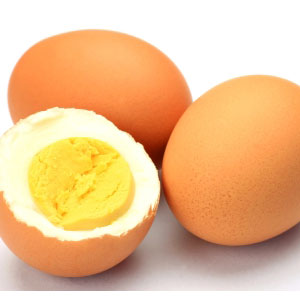



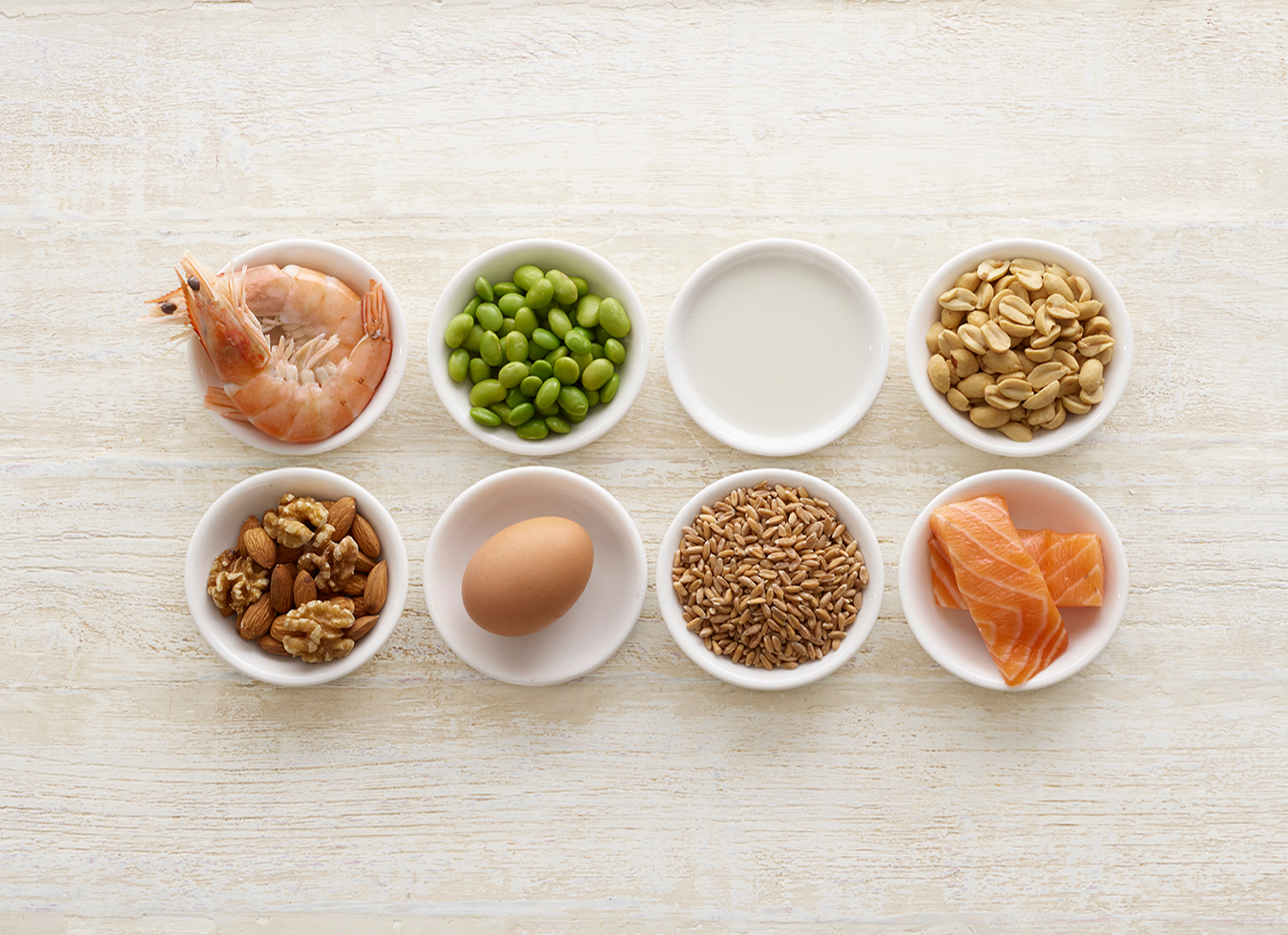
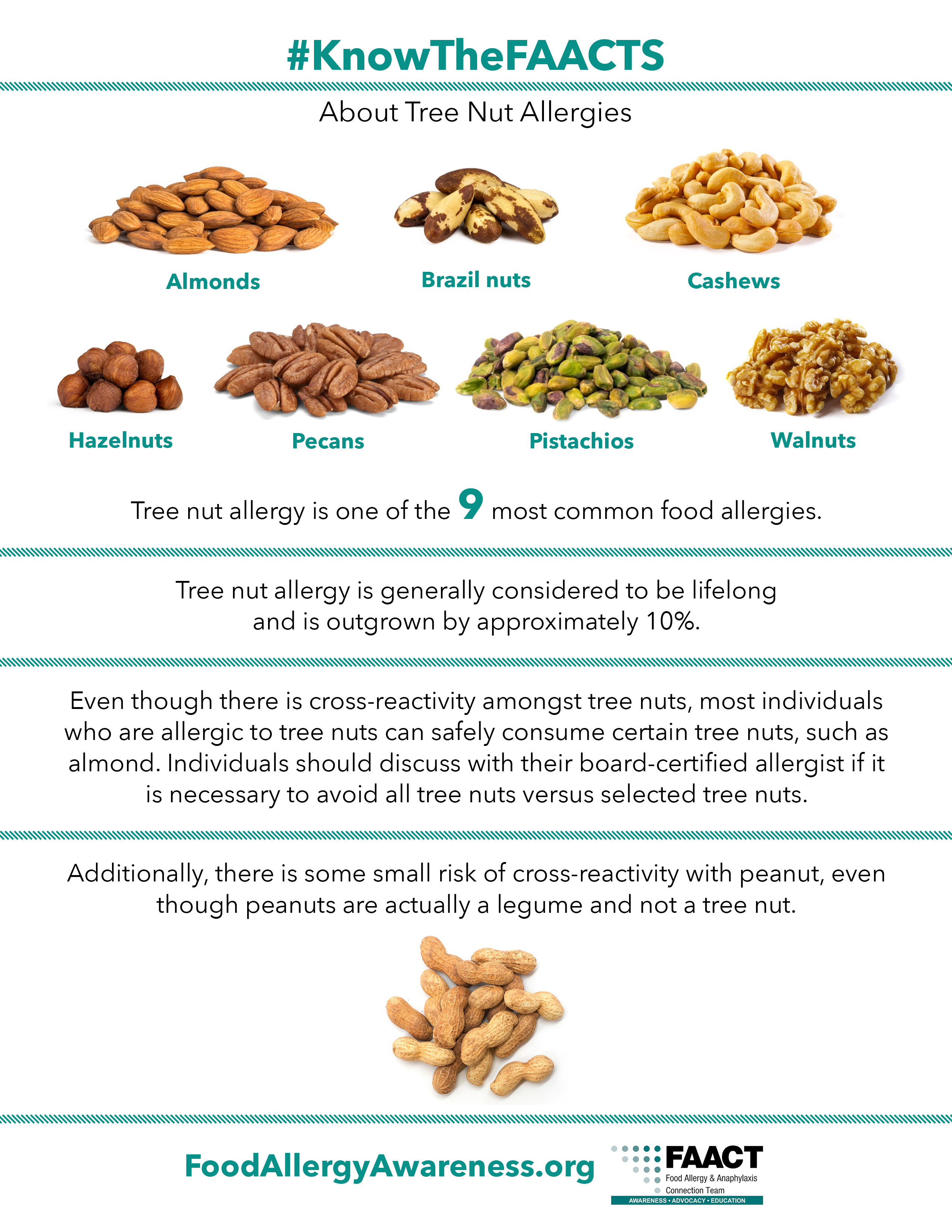




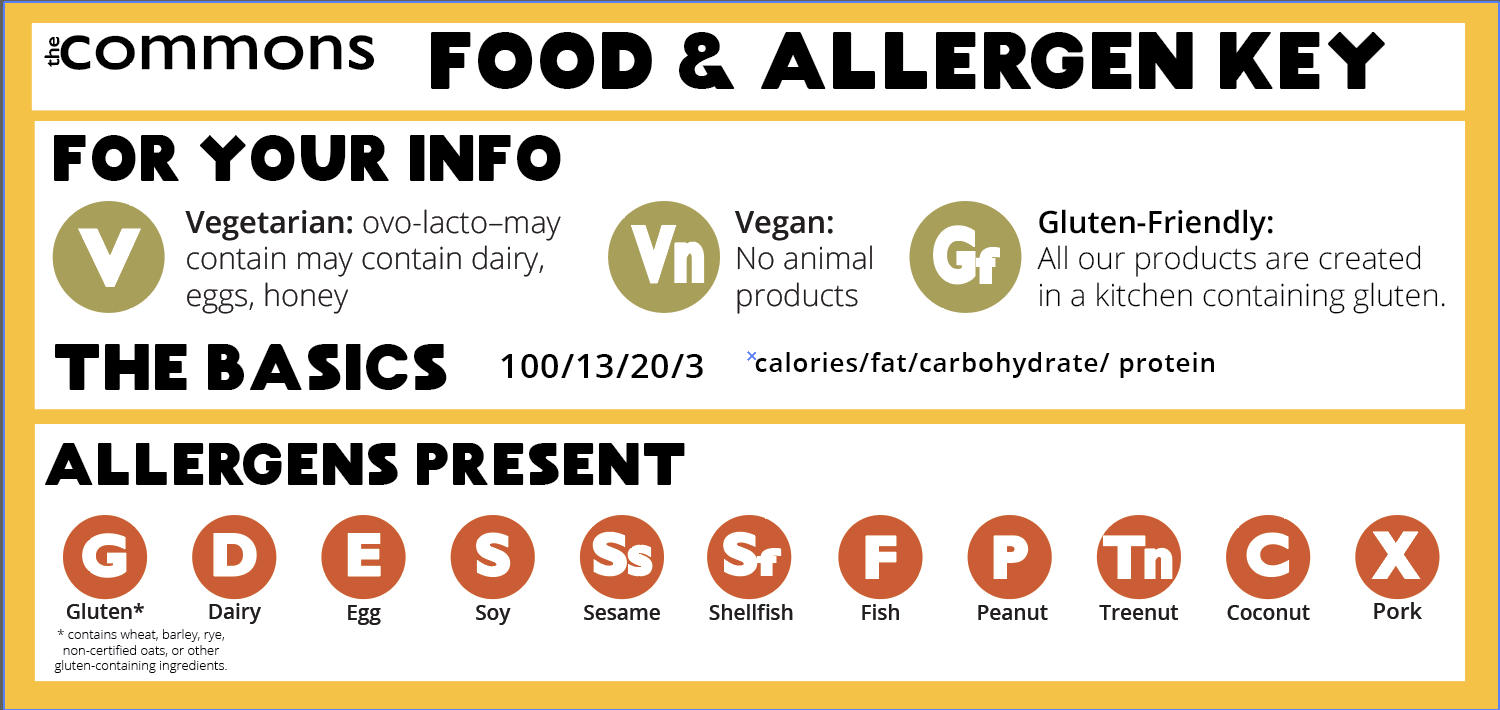
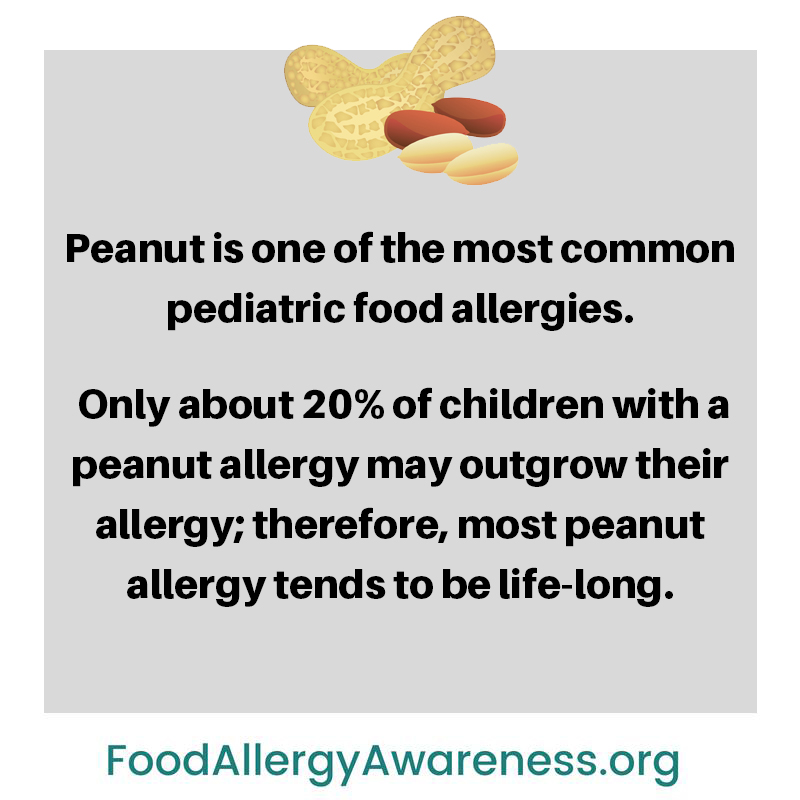
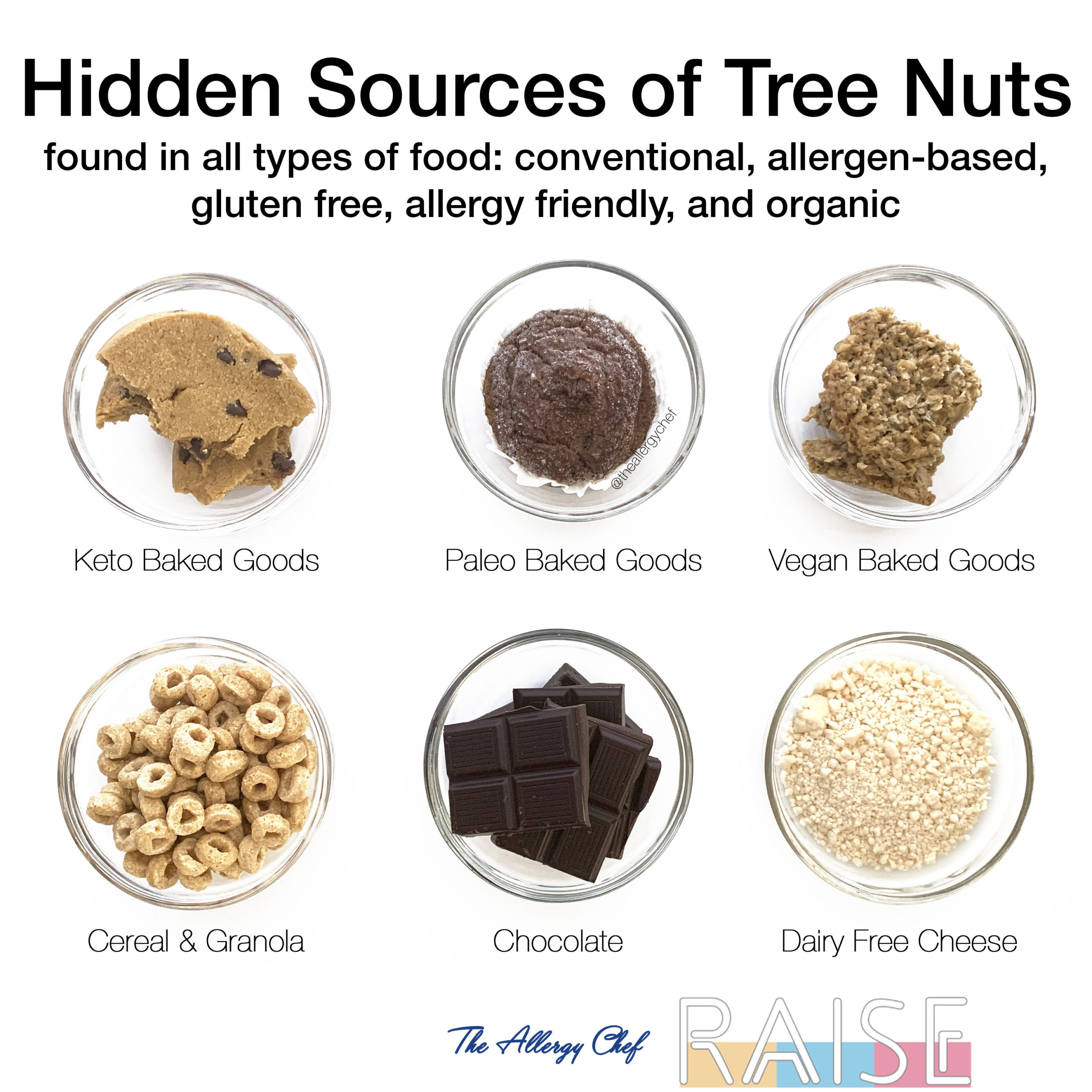


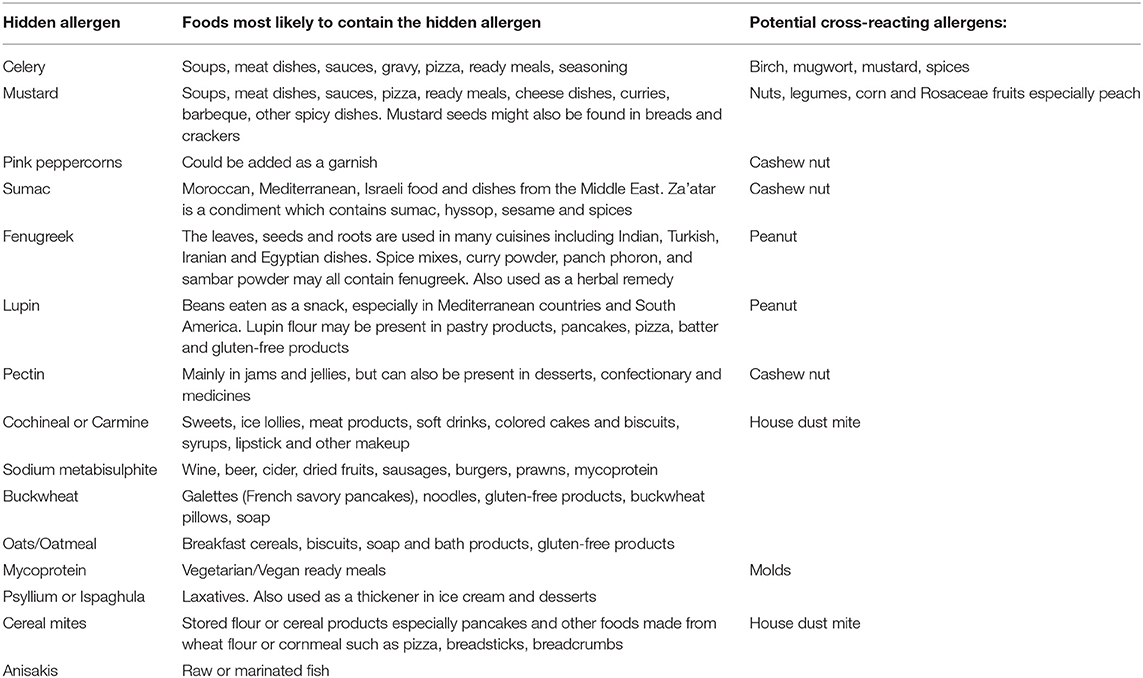
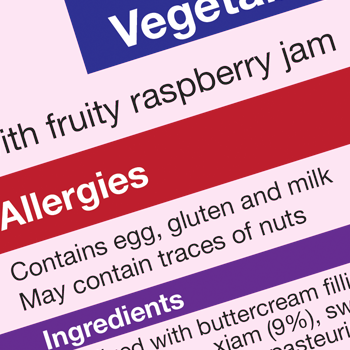
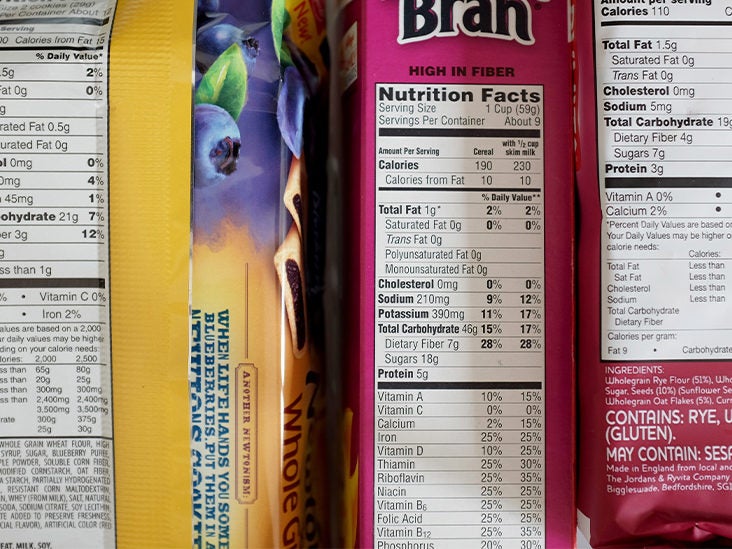
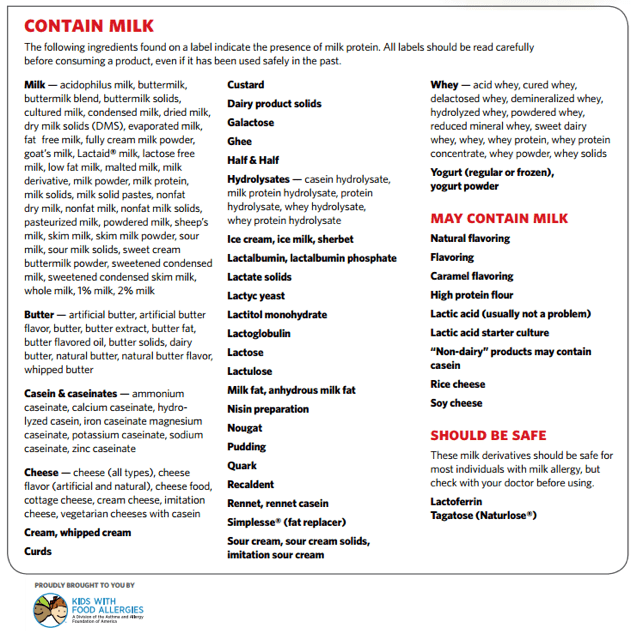

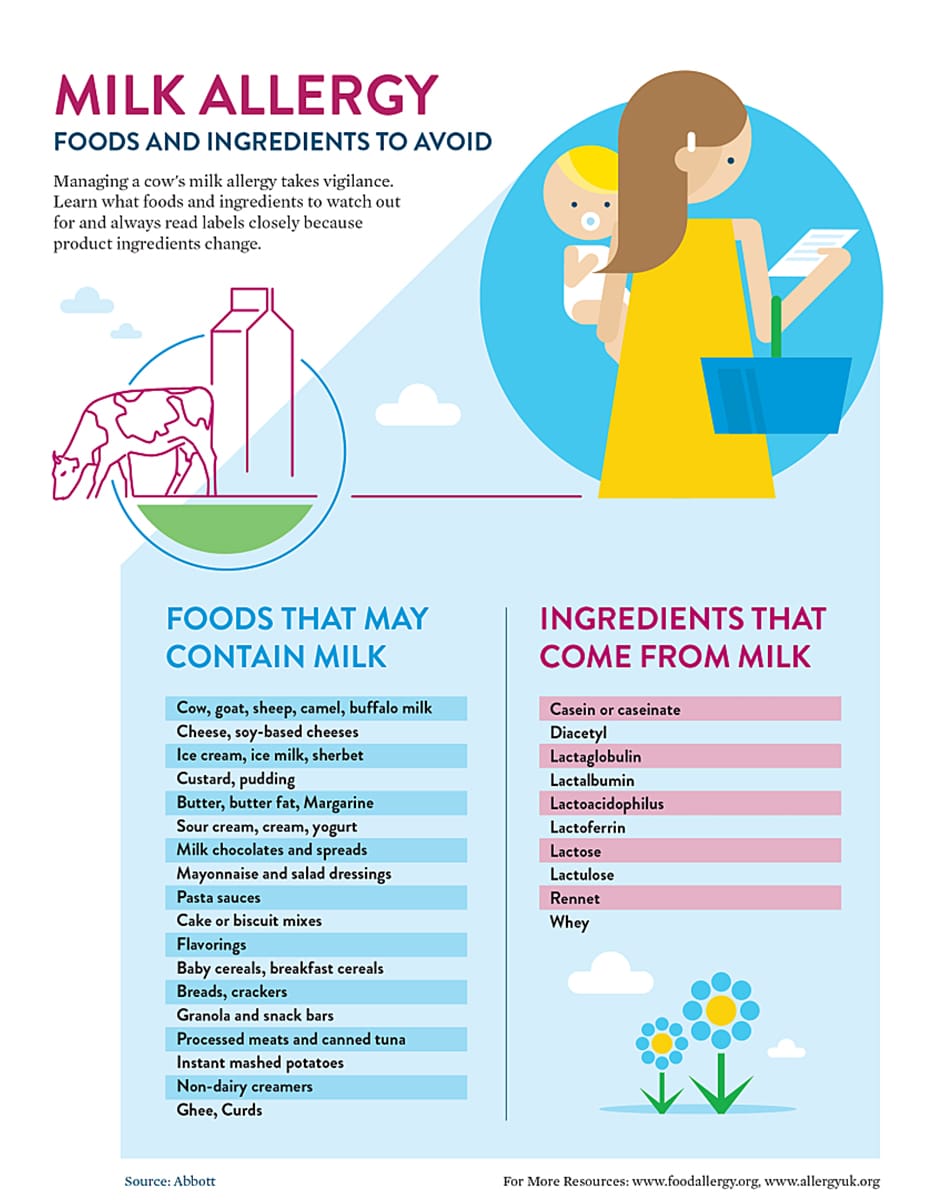
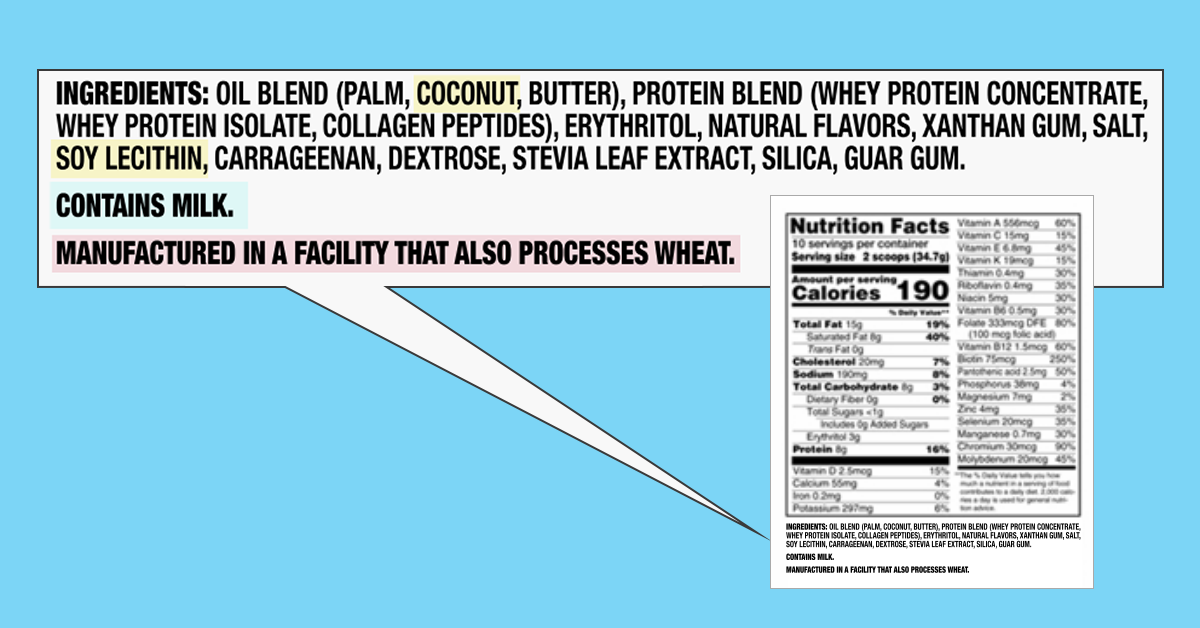


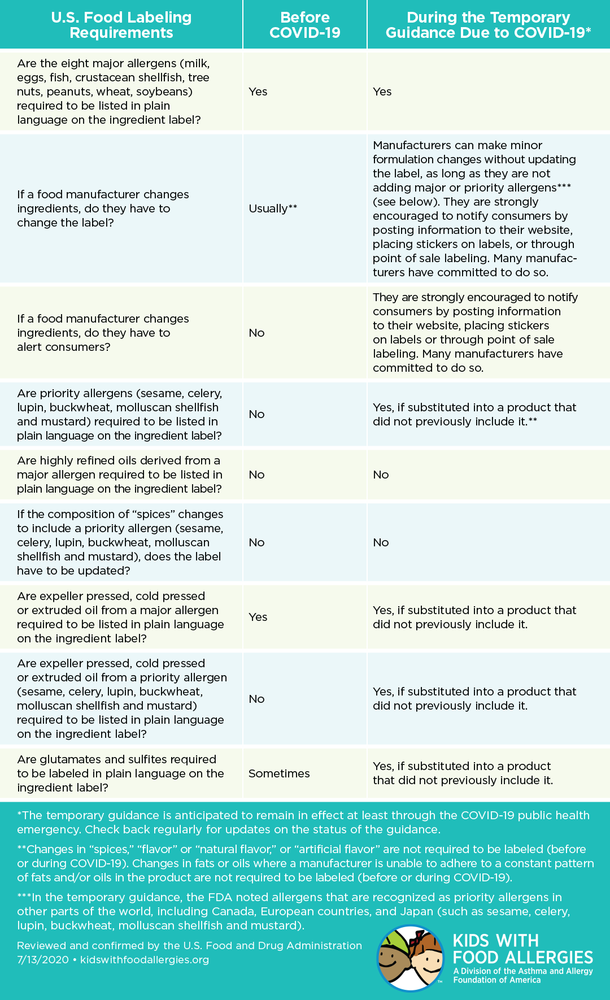




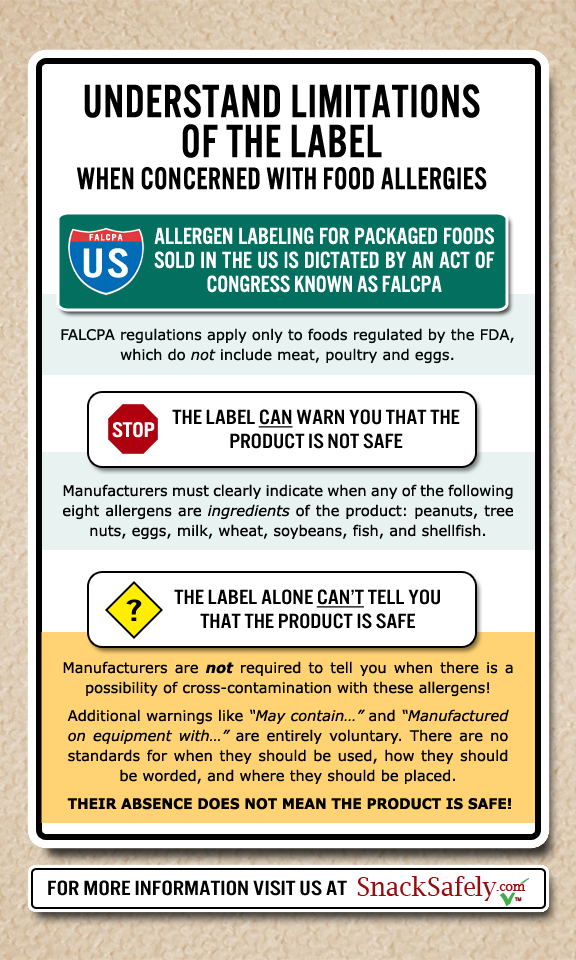
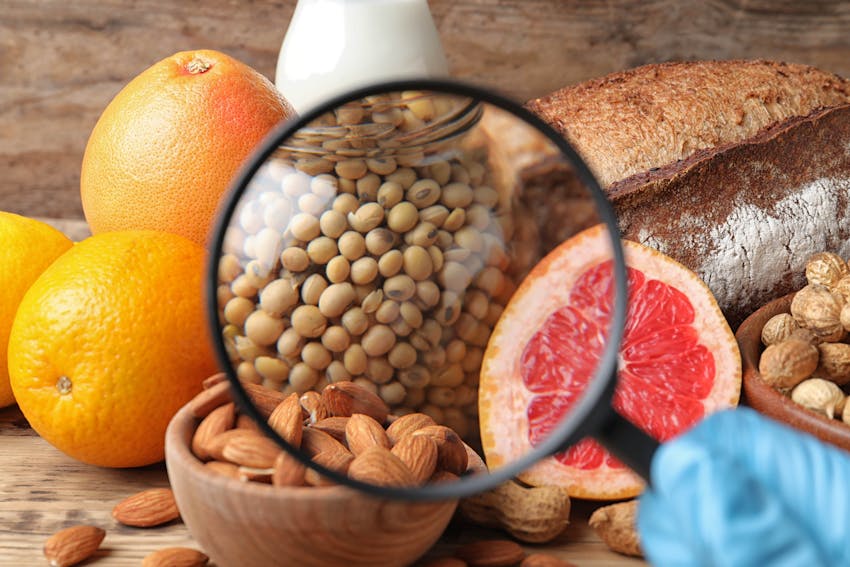



Post a Comment for "38 hidden allergens are always listed on labels"